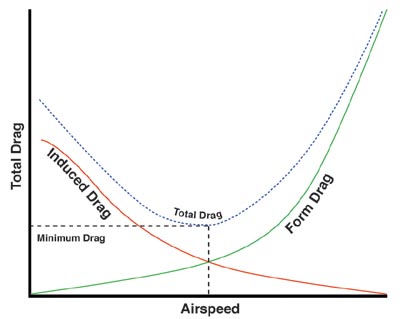The Airbus A380 has a wing with aspect ratio between 7 and 8. Reference here. The lift to drag ratio is somewhere between 19 and 20, which is comparable to aircraft with higher aspect ratios and superior to aircraft with similar aspect ratios. A reference to the lift/drag number is here. How can the A380 achieve this?
2 Answers
The aspect ratio of the aircraft is usually kept as high as possible to reduce the induced drag. However, it forms only one part of the total drag acting one the body.
The L/D ratio can be improved by either increasing the (coefficient of) lift or decreasing the (coefficient of) drag.
While no data is available in open sources, it is likely that the wing airfoil was designed for high lift in cruise conditions. Also, the wing has a number of high-lift-devices to increase lift like the flaps, droop nose etc.
For example, in order to improve the L/D ratio during initial takeoff and climb, the A380 incorporated a droop nose device in the inboard leading edge. This improved the lift by around 5%. The figure below shows A380 deploying droops during landing
"A380 F-WWEA LEGT" by User:Keta - Own work. Licensed under CC BY-SA 2.5 via Commons.
The aerodynamic drag on a body is a combination of a large number of components like
- Induced Drag
- Parasitic Drag
- Wave Drag.
The (lift) induced drag is lesser for aircrafts with higher aspect ratio. In designing the A380 however, the limitations of airport operations meant that the wingspan was limited. This resulted in a rather low aspect ratio of 7.8. However, the same effect(of higher aspect ratio) can be achieved using wingtip devices such as winglets. A380 uses wingtip fences to reduce induced drag.
"British Airways Airbus A380-841 F-WWSK PAS 2013 10 Wingtip device" by Julian Herzog. Licensed under CC BY 4.0 via Wikimedia Commons.
As the speed increases, the induced drag reduces and the parasitic drag (of which the form drag is a component) comes to dominate the drag produced.
"Drag Curve 2" by Original uploader was GRAHAMUK at en.wikipedia - Transferred from en.wikipedia; transferred to Commons by User:Sfan00_IMG using CommonsHelper.. Licensed under CC BY-SA 3.0 via Commons.
The major part of the parasitic drag is the form drag, caused by the movement of aircraft through the air. The A380 design reduces this by reducing the control surface areas through the use of Fly by wire system.
This is also achieved by reducing the drag caused refining the aerodynamics of the aircraft, such as by using improved flap track fairings and increased size of the belly fairing.
"Singapore Airlines A380 9V-SKH" by Simon_sees - Singapore Airlines A380 9V-SKH. Licensed under CC BY 2.0 via Wikimedia Commons.
The overall aircraft configuration and not just the individual components were analyzed using CFD, which led to further optimization of the aerodynamics design and reduction of drag by changing the spanwise distribution of camber and twist from root to tip (around 2%).
The airfoil used was most probably optimized for reducing wave (transonic) drag, though no data is available in open literature.
Even though all these improvements were only marginal individually, put together, they have a significant impact on the overall L/D ratio.
One more thing to note is that though the L/D ratio might appear high, the value is actually comparable (and even less than) the aircrafts that enter service after A380. So in a way, there is nothing surprising about the L/D ratio of A380 except that it illustrates the steady progress being made in civil airliner aerodynamic design.
-
$\begingroup$ Droop or Droop nose device is the term used for the leading edge high lift device in A380 inboard wing. They are not slats. In case of slats, a separate panel detaches itself from the wing leading edge and drops. In case of droops, the entire leading edge rotates forward. in case of slats, there is a gap (the slot) between the slat and the wing LE. there is no such thing in case of the droop $\endgroup$ Commented Aug 22, 2015 at 8:57
-
$\begingroup$ Do you have any idea what is the $V_Y$ (a.k.a. “green dot speed”)? Since not much can be done about increase of induced drag due to low aspect ratio and most of the aerodynamic refinements affect form drag, I would expect it to be somewhat higher, but I don't have any reference. $\endgroup$ Commented Aug 22, 2015 at 12:34
A benefit that the A380 has in terms of drag is its size. As the aircraft is very large, the Reynolds numbers appearing on the wing are larger. For a turbulent boundary layer on a hydraulically smooth plate, Schlichting$^{[1]}$ proposes the following approximate relation for the Turbulent friction coefficient, $C_f$:
$$ C_f=\frac{0.0472}{(log_{10} Re)^{2.58}} $$
This shows that for increasing the value of $Re$, the value of $C_f$ decreases. As such, a larger wing will lead to a lower friction coefficient.
It should be noted that the total friction drag might still increase with increasing wing size.
[1] Schlichting, H., Gestern, K.: Boundary Layer Theory, 8th edn. Springer, Berlin (1999)





